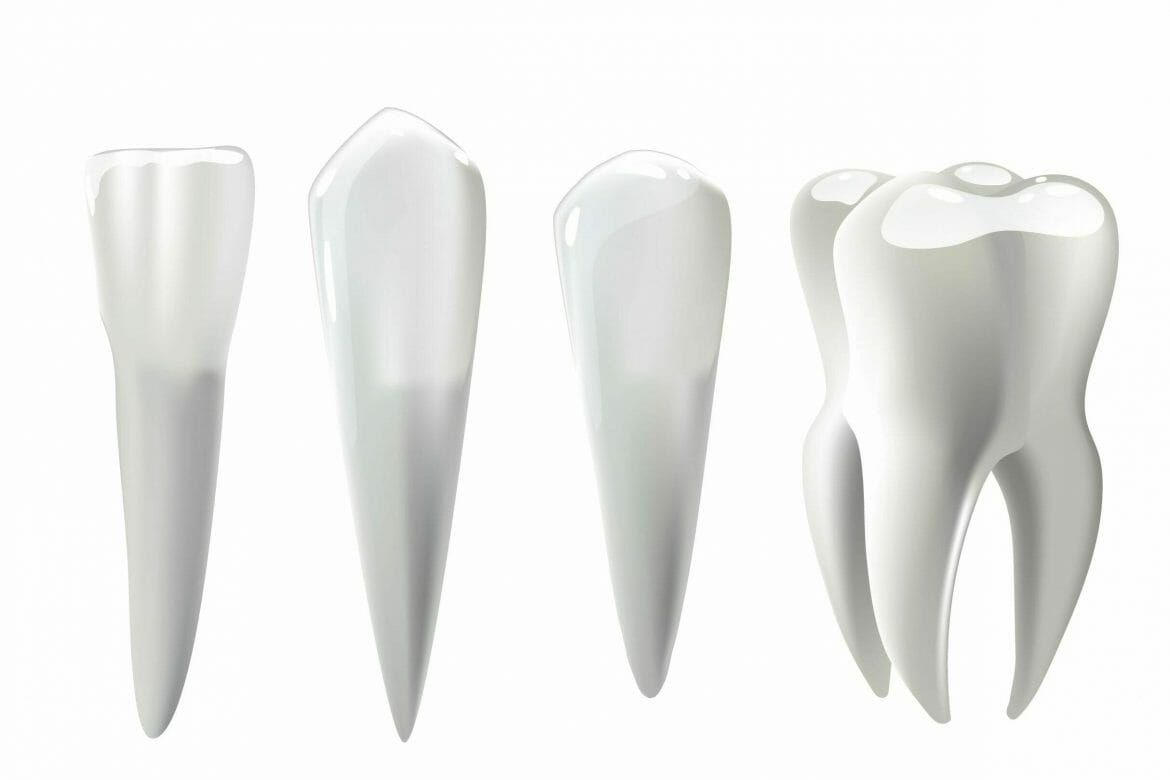Teeth are the hardest substance in the human body. We need them to eat and speak, and everyone loves a toothy grin that brings life to a person’s face. Teeth are essential to everyday life, yet the average person knows little about their anatomy.
There are many advantages to knowing the names and functions of teeth. Having a general understanding can help people take initiative in their oral health. Identifying the area or the tooth causing pain can help one become proactive in seeking a dental professional. Becoming aware of the long-term effects of ignoring critical issues can improve overall health, as well.
Why We Have Teeth
We use our teeth for many reasons — the most obvious one is for eating. Teeth break food down into pieces small enough for the stomach to digest. In this way, the teeth play a vital role in the digestion process. The more food is chewed, the easier it is to digest.
Another critical role teeth play is in linguistics. No matter the language, teeth help people create the sounds that make up languages. Without teeth, it becomes much harder to make distinguishable sounds, and as a result, it would become much harder to communicate.
The Four Types of Teeth
Humans are born with their first 20 “starter” teeth, which are ready to break through the gum’s surface at different stages of development. Those starter teeth are what are commonly referred to as baby teeth. They are temporary, becoming loose and falling out during childhood. They are then replaced with a set of 32 “grown-up” or permanent teeth.
Teeth fall into four different categories, each having their unique function:
- The incisors (8)
- The canines (4)
- The premolars (8)
- The molars (12 — including two wisdom teeth on each side)
However, some people end up having their wisdom teeth removed.
Incisor Teeth
The incisors are the front most eight teeth. Incisor teeth are flat-edged and considerably narrow compared to other teeth in the mouth. During the average life-cycle of a human, the incisors are the first baby teeth to emerge. They typically appear within the first 6-8 months of life and are also some of the first teeth to fall out.
When someone “sinks their teeth” into something, they are sinking their incisors in order to take a bite. They tear and cut food apart. The incisors support the lips and help the tongue form certain sounds.
Canine Teeth
The next set of teeth are the canines, which are the sharpest teeth in the mouth. They are used to tear tough food apart. The name “canine” comes from their similar appearance to dogs’ teeth. Although they are named after canines’ teeth, human canine teeth are much duller and less pronounced than the animals’. Dentists refer to these teeth as cuspids.
Interestingly, canine teeth are integral to the face’s structure. Without them, a person’s bite can become misaligned. They provide support for the rest of the mouth. They assist the jaws when closing, as they help with the placement of the upper and lower jaws. However, they are the first set of teeth that tend to wear down. Tooth decay can be prevented with routine dental hygiene and care.
Premolars
The average person has four premolars in their upper jaw and four in their lower jaw, located next to the canine teeth. Premolars have flat surfaces with ridges. Dentists often refer to them as bicuspids. They are larger than the incisors and the canines but are not as wide as molars. Premolars replace baby molars, first coming in as a permanent set around age 10.
They help mash and tear food, helping molars begin the process of completely pre-digestive chewing. Premolars are transitional teeth, partially taking on the jobs of both canines and molars. They also help maintain the height of the face.
Molars
The molars are the largest and hardest set of teeth in the mouth. There are twelve molars: eight primary molars and four wisdom teeth. The main set of eight comes in two stages — typically around age 6, then age 12. The last set of molars, the wisdom teeth, comes in last, around age 17-25. Sometimes, there is not enough space in the jaw for all wisdom teeth, and the teeth become impacted. When a person’s wisdom teeth cannot surface and cause pain, they may need to be removed.
Molars are the superstars of oral digestion. They are the strongest in the jaw and thoroughly grind up food before it is swallowed. After the first bite, molars come into the most contact with food. As a person eats, their tongue pushes the food to the back of the mouth for the molars to mash. The better food is chewed, the easier it is to digest. Because of the constant contact with what we eat, molars are the most susceptible to cavities out of all the types of teeth. That is why it is essential to maintain a healthy mouth.
When To See the Dentist
We need our teeth to function. So, when something is not right, it is crucial to get the right kind of dental treatment. Teeth that are not adequately functioning can impact a person’s ability to eat and speak. Unaddressed oral health issues can also sometimes be linked to other general health problems. This is why regularly visiting the dentist’s office is extremely important. It is important to take any question concerning dental health to a qualified dental expert.
Angela Bateson, DDS, is a Complete Health Dentist whose clients trust her with their comfort and care. Dr. Bateson and her highly skilled team provide a host of preventive and restorative care services for their patients. To schedule an appointment, call 419-863-2636 or book an appointment online.


Thanks for letting me knowing that